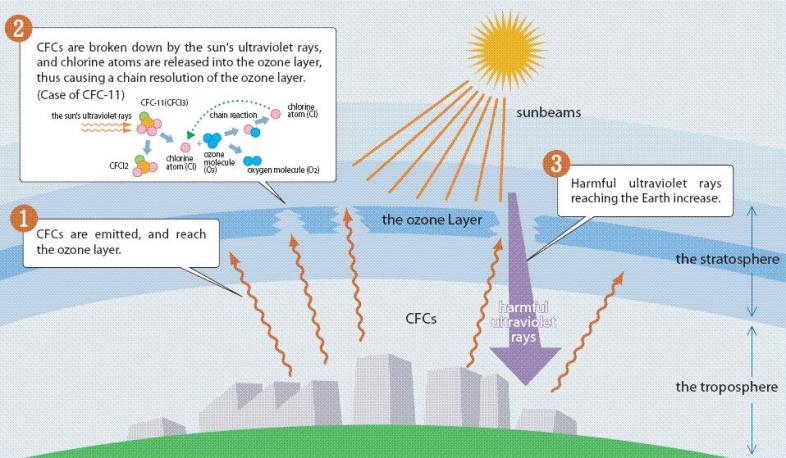[Thematic Report] Calculating the Environment Cost of Using Air Conditionersby Troyee Mutsuddy | 19-05-2020 20:37 |
|---|
|
Due to global warming, temperature has been rising all over the world, and with that, the use of air conditioners have increased. As the temperature rises, we tend to find relief from the cooling breeze of air conditioners. It may be seemingly harmless, but we can calculate the environmental cost of using air conditioners. Hydrofluorocarbons (HFCs) and Chlorofluorocarbons (CFCs) Hydrofluorocarbons (HFCs) and Chlorofluorocarbons (CFCs) are important cooling agents of air conditioners. These are a group of industrial chemicals that are used for cooling and refrigeration. Even though HFCs are only 1% of the total greenhouse gases, it is a powerful greenhouse gas that contributes to global warming. These are short lived pollutants that live for upto 15 to 29 years in the atmosphere. The use of HFC in air conditioning is popularized from the 1990¡¯s and even though their amount is very limited in the atmosphere, due to global warming and widespread availability of ACs, the use of air conditioning has increased over the years and so had the emission of these HFCs. Older and malfunctioning air conditioners tend to release more of HFCs into the atmosphere. Like other greenhouse gases, these HFCs cause ozone depletion. And since the use of ACs has been increasing, more HFCs are being released in the air, causing more holes in the ozone layer.  Source: The Ozone Hole (http://www.theozonehole.com/cfc.htm) Energy Consumption Air conditions require a lot of energy to use, especially electricity. Air conditioners, depending on the model (from the smallest window unit to central air conditioner) can use upto 500 to 3500 Watts of electricity. With so much electricity consumption, it also creates more pollution as CO2 is released into the air and causes ozone depletion. According to CCAC (Climate and Clean Air Coalition to Reduce Short-Lived Climate Pollutants), the key points to understand are-
However, emission of HFCs and other greenhouse gases from air conditioners can be controlled through a phase down production and consumption. Some researches find HFO (hydrofluoroolefins) as a replacement for HFCs. HFO molecules break down in a few days, so they have less time to trap in heat. Using eco-friendly air conditioners can produce less carbon footprints as well. References: Schlossberg, T. (2016, August 10). How Bad Is Your Air-Conditioner for the Planet? Retrieved May 19, 2020, from https://www.nytimes.com/2016/08/10/science/air-conditioner-global-warming.html Hydrofluorocarbons. (n.d.). Retrieved May 19, 2020, from https://www.ccacoalition.org/fr/slcps/hydrofluorocarbons-hfc |